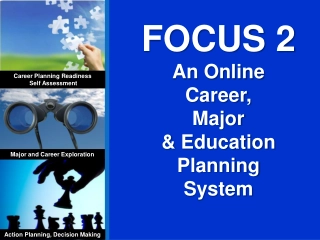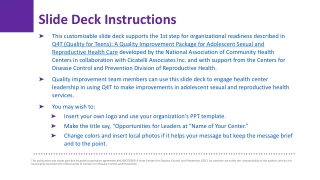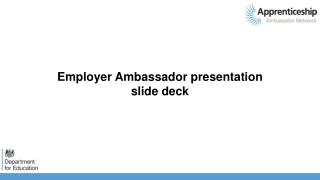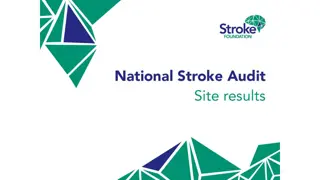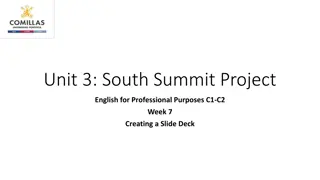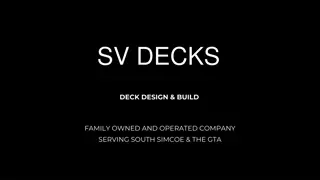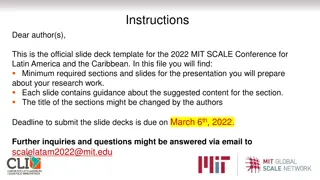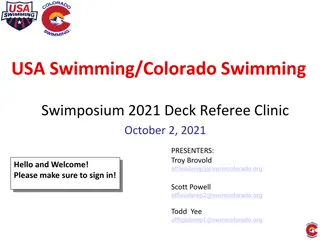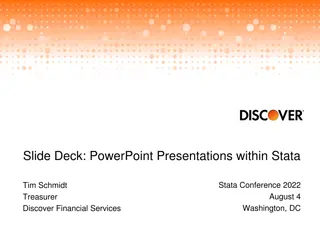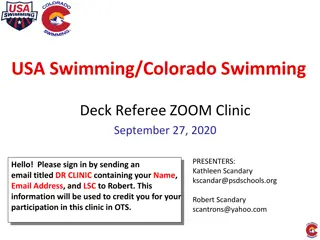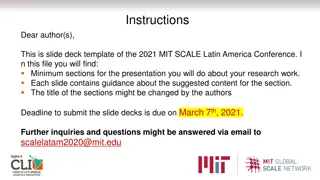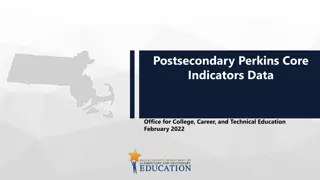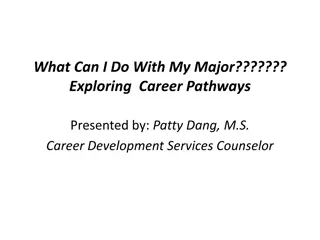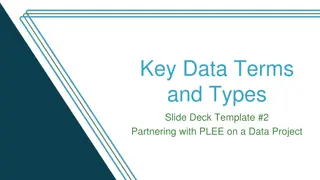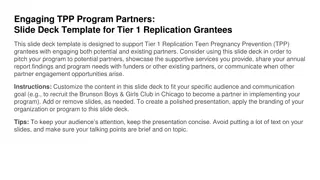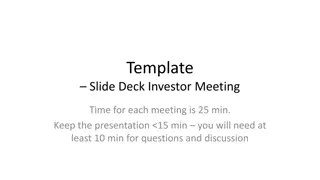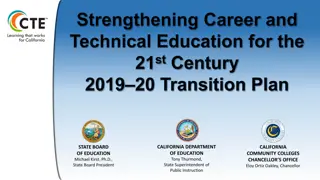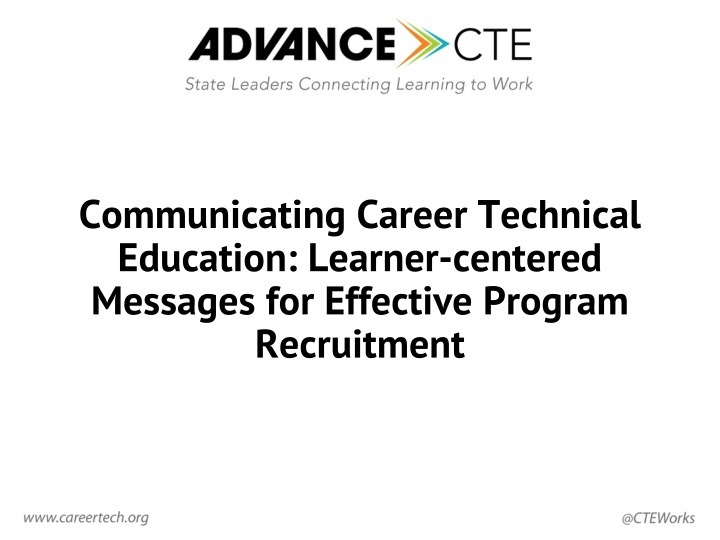
Effective Messages for Career Technical Education Program Recruitment
Discover key findings and considerations for effective recruitment in Career Technical Education programs. Learn about research goals, methodology, and findings aimed at enhancing learner-centered communication strategies. Explore how to tailor messages for historically marginalized populations to improve program engagement and satisfaction.
Download Presentation

Please find below an Image/Link to download the presentation.
The content on the website is provided AS IS for your information and personal use only. It may not be sold, licensed, or shared on other websites without obtaining consent from the author. If you encounter any issues during the download, it is possible that the publisher has removed the file from their server.
You are allowed to download the files provided on this website for personal or commercial use, subject to the condition that they are used lawfully. All files are the property of their respective owners.
The content on the website is provided AS IS for your information and personal use only. It may not be sold, licensed, or shared on other websites without obtaining consent from the author.
E N D
Presentation Transcript
Communicating Career Technical Education: Learner-centered Messages for Effective Program Recruitment
Agenda Key findings Considerations for historically marginalized populations Putting research into action
Advance CTE Report April 2020 Research Report: Communicating Career Technical Education: Learner-centered Messages for Effective Program Recruitment Report and Related Tools: https://careertech.org/recruitmentstrategies
Research Goals Test resilience of 2017 research findings in current environment Confirm what families want in their education and satisfaction level in and outside of CTE Test timely messages on what is most compelling to families about CTE and who should communicate it Focus on findings by race/ethnicity and income to identify equity barriers to CTE and message tailoring
Research Methodology Qualitative Quantitative National Online Survey 1,098 parents/guardians 255 Current adults 843 Prospective adults 10 Virtual Focus Groups 2 Current Learners & Parents/Guardians 8 Prospective Learners & Parents/Guardians 1 Universal Prospective group, 7 disaggregated by income, race and ethnicity Oversample of Black, Latinx, and low-income families 1,058 learners 256 current learners (9-12th) 802 prospective learners (6-11th) Oversample of Black, Latinx, and low- income families
Advancing CTE Without Limits Principle 1: Each learner engages in a cohesive, flexible and responsive career preparation ecosystem Principle 2: Each learner feels welcome in, is supported by and has the means to succeed in the career preparation ecosystem Principle 3: Each learner skillfully navigates their own career journey
CTE Still Delivers for Families 53% of Current CTE Parents/Students Very Satisfied with overall school experience (88% satisfied) 28% of Prospective Parents/Students Very Satisfied with overall school experience (75% satisfied)
CTE Families More Satisfied with Education Quality and Opportunities Those participating in CTE and their parent/guardian are more satisfied than those not involved in CTE in regards to:
Key Aspects of CTE Priorities for Families in their Education Exploring careers and gaining skills were ranked in the top 2 most important aspects of education by over 45 percent of prospective families compared to less than 20 percent for extracurricular activities and sports Participants rated items from most important to least important. Dark shading shows % most important; bar shows % top 2 in importance
Families are Attracted to the Real- World Benefits of CTE Preparing for the Real World was still the top message chosen by over 60 percent both prospective and current families on the value and benefit of CTE. This message was especially effective for prospective families, and most effective among prospective Latinx families. Preparing for the real world was also chosen as the top desired benefit/outcome for CTE by both prospective and current families.
CTE Benefits and Outcomes: Finding Passion A Top Priority Prospective and current parent/guardians and learner placed finding a career passion in their top two outcomes and benefits of CTE out of 22 options. Finding a career passion was ranked above finding a well-paying job, earning college credit, and having experiences that stand out on college and job applications Exploring careers and gaining real-world skills should be communicated as an effective path to finding a career learners are passionate about Top CTE Benefits and Outcomes for Prospective Families Preparing for the Real World Finding career passion Getting hands-on experience Learning life skills Discovering right fit for career
College and Career Success Matter to Families 78 percent of prospective families and 85 percent families currently participating in CTE expect to pursue some level of postsecondary education Families in CTE are more certain about their postsecondary plans - only 3% were unsure vs. 13% of prospective families Families are more open to paths other than a four-year degree compared to our 2017 research.
CTE Learners Prepared for College CTE Learners and their parents/guardians are more satisfied with opportunities to prepare for college through opportunities for advanced classes and college credit. CTE Learners and their parents/guardians are more confident about completing a postsecondary degree. Over 80% of families currently in CTE are satisfied with opportunities to earn college credit and take advanced classes compared to only 60% of prospective families
Teachers and School Counselors are Go-To Sources Teachers and school counselors top sources across, participation, race and income CTE learners and alumni are a top 5 source for both prospective and current families Sources named by families as Top 2 Sources for information about CTE Parents more likely than learners to consult non- school sources (employers, community orgs)
Message Testing Tested three messages for: - Believability - Personal connection, - Relation to current education experience - Likelihood to enroll in CTE Messages: Prepare for the Real World, Safe Bet in this Economy, and Making Connections Force choice of the message that makes CTE sound like a good options
Most Effective Message: Preparing for the Real World Preparing for the Real World 64% Prospective Families 56% Current Families 69% Highest: prospective Latinx families
Language that Works Gain real-world skills Explore careers for a path you are passionate about Get hands-on experience Leads to fulfilling, reward careers Be prepared for college Enhance your high school experience Make valuable connections Be prepared for the real world
Language that Works Explore careers to find their passion Have more options for career and college success CTE Gain real- world skills Learners...
Equity Considerations for Historically Marginalized Populations
Real World Skillbuilding, Hands-on Experiences Face Satisfaction Gaps Career exploration and gaining skills in a specific field had equitable difference in satisfaction among race/ethnicity and income between prospective and current learners However, White learners had significant higher differences in satisfaction between prospective and current groups for internships and networking with employers than Black, and Latinx learners Quality, equity and access for CTE programs matters for effective communication to families
Real World Skillbuilding, Hands-on Experiences Face Satisfaction Gaps
CTE Helps Each Learner Prepare for and Complete College Latinx and low income prospective parents/guardians had significantly lower percentages choosing a two or four year degree outcome after high school than White and Black parents/guardians Plans to earn a two or four year degree immediately following high school Latinx Families Families Experiencing Low Income 60% 55% 42% 36% The findings indicate CTE helped to close this gap for both parents/guardians and learners Prospect Current Prospect Current
Source Trust and Information Accessibility Matters It is important that your intended audience sees themselves in information sources about CTE Black and Latinx parents/guardians were significantly more likely to consult school counselors than Black and Latinx learners Online sources of information about CTE should be up-to-date, use digestible terminology, and be available in the language(s) of your target audience Top 2 Source Top 2 Source Google searches School website Black prospective families Current learners Low income prospective families Black prospective parents/guardians
Effective Secondary Messaging: Making Connections While Preparing for the Real World was the universal top choice, CTE s unique opportunities to build social capital with peers, instructors and employers with similar interests resonated with Black, Latinx and low income learners Effective Retention Message: The percentage difference of Making Connections over the economic message was even more significant among current learners. Current Learners Percentage Point Difference Making Connections Chosen Over An Economic Message Prospective Learners Black +19 +18 +15 +7 Black +9 +8 +6 +1 Low Income Latinx Latinx Low Income White White
Putting Research Into Action
Key Dos and Donts Do.... Don t... Be consistent and reinforce key messages Utilize learners to tell CTE success stories Be specific about how CTE works, particularly hands-on experiences Engage and inform educators closest to learners about CTE Emphasize CTE learners are more satisfied with their education Emphasize CTE s value in preparing for college and career success Position CTE and college as an either/or Position CTE as a different high school experience Push financial benefits of CTE career pathways over finding passion Do all the talking - elevate the learner voice Neglect message tailoring Forget about retention messages
Resources You Can Use https://careertech.org/recruitmentstrategies Core Messages resource with the messaging triangle and key supporting messages for historically marginalized populations Dos and Don ts which detail how to use the messages and how not to use them Fact Sheet with key statistics that reinforce the value and benefits of CTE Message card, social media graphics, and printed material templates, Social media guide with tips and examples on how to reach audiences effectively and equitably

